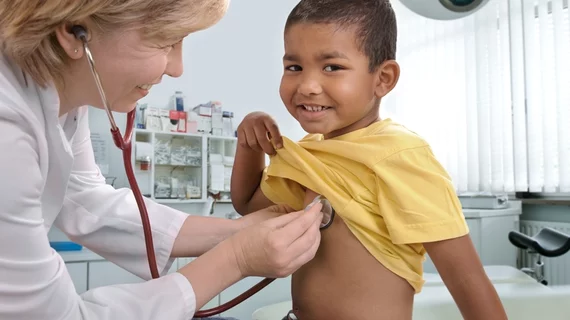When the American Heart Association (AHA) and American College of Cardiology released updated blood pressure guidelines late last year, some wondered if they had overdone it. Under the new criteria, the proportion of U.S. adults with hypertension jumped from 32 percent to 46 percent.
Although they didn’t garner as much attention as the adult guidelines, the criteria for determining hypertension in children changed in 2017, too. And they also led to an increase in the number of individuals considered outside the normal range, according to a study published online April 23 in JAMA Pediatrics.
Using 15,647 children from the National Health and Nutrition Examination Surveys, the new guidelines categorized an estimated 14.2 percent of the cohort as having elevated blood pressure—up from 11.8 percent using the previous guidelines developed in 2004. In addition, 5.8 percent of the kids were found to have either newly diagnosed hypertension or a worsening clinical stage.
“Because reclassification necessitates additional follow-up and possibly treatment, it represents a new and significant disease burden for practitioners and patients alike,” wrote lead author Atul K. Sharma, MD, MSc, with the department of pediatrics and child health at the University of Manitoba, and colleagues.
“After matching by sex, age and height with controls with normal BP, the children who were reclassified upward were more likely to be overweight or obese and to experience an increased prevalence of risk factors as determined by laboratory test results, including adverse lipid profiles (elevated LDL cholesterol and triglycerides) and prediabetes. These data suggest that we may previously have been underestimating cardiovascular risk in otherwise healthy US children.”
The authors pointed out the American Academy of Pediatrics’ (AAP) updated guidelines considered childhood blood pressure “typically tracks into adulthood, and children with elevated BP are more likely to develop primary hypertension and metabolic syndrome as adults.” For this reason, they noted, it’s particularly important to have appropriate risk stratification and manage blood pressure early in life.
While nearly 6 percent of the study cohort had newly diagnosed or worsening hypertension under the updated criteria, only 0.5 percent shifted to a lower BP tier.
Sharma et al. acknowledged the study didn’t have sufficient numbers to conduct analyses on age-, sex- and race-specific differences, although the average age of the cohort was 13.
In a related editorial, Stephen R. Daniels, MD, PhD, said there is still a lack of evidence on how much blood pressure in childhood translates into lifetime cardiovascular risk.
“It is somewhat reassuring that the individuals identified in the new classification system have other risk factors, such as obesity, as well as blood pressure elevation,” wrote Daniels, with the department of pediatrics at University of Colorado School of Medicine. “We know from the Bogalusa Heart Study that clustering of CVD risk factors in childhood is associated with greater development of atherosclerotic lesions in adolescence and young adulthood.”
Until more data is available, Daniels recommended clinicians follow the AAP guidelines, which he believes are easier to use than the old criteria.

